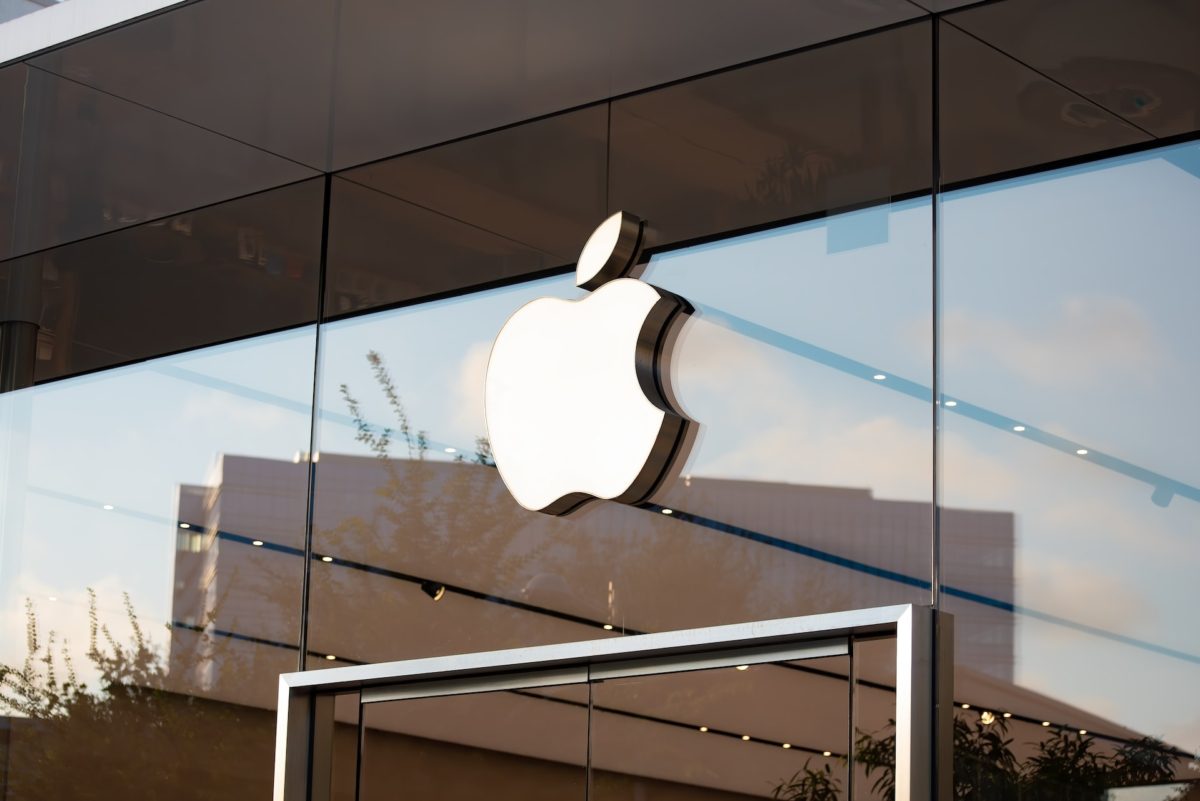Have you ever wondered how brands like Apple, Starbucks, and Netflix manage to achieve worldwide recognition and success? The secret lies in their global strategy.
Branding is an essential element of any brand. This term refers to a brand strategy that makes the brand recognizable and builds its awareness among consumers. The branding process emphasizes the company values and goals, creating customer loyalty and trust. It also influences the brand positioning and allows the brand to stand out from the competition.
The business brand plays a great role here, but product branding is also important. We present the product branding definition and show you how to create a product branding strategy. You will also see one of the best product branding examples.
What is a product branding definition?
While the brand personality is focused on the brand itself, product branding highlights product brand identity and personality. The process is similar to brand building which highlights colors, hues, product packaging or brand voice.
The ultimate goal is to effectively distinguish a specific product or product line on the market as a single brand and make that product or product line as popular as possible among customers.
What is the difference between product branding and corporate branding?
You definitely should be aware that product branding is not the same as corporate branding. Company branding is permanent throughout the brand, which means that it is characterized by high stability.
Product branding is much more exposed to changes as it distinguishes a particular product from competitors’ product brands as well as other products of the same company. Often, product branding is supposed to completely detach the product from the brand. It is also related to the general concept of identity as well as corporate identity. Are you curious if there are examples to confirm these words? Let’s go through some of them!
Would you expect to find out that Lay’s are produced by the PepsiCo brand? Perhaps not, and probably, if you knew, you would not eat them, as Pepsi is indisputably associated with a drink, not with potato chips, right? However, one company can produce products so different from each other that creating a separate product’s identity is a necessity in this situation.

Why should you invest in product branding?
Each corporate brand that intends to create many products or a diverse line of products (often very different from each other) should invest in product branding. Only well-defined branded products will attract customers. The bland ones most often go unnoticed.
It goes without saying that you should implement a product branding strategy, but you need to consider how much to invest in it. This depends on the size of the company, product offering and brand markup.
Big companies and corporations definitely need to invest in branding, including product branding, more than smaller companies that do not sell so many products nor have such extensive product lines.
What makes a strong product brand?
Creating product brands is not a very complicated process. It does not require a lot of effort to build a strong brand. Although, of course, not all endeavors lead to a satisfactory result.
Google and Amazon are successful brands, yet their names say nothing about what they do. These brands are powerful thanks to certain intangible assets.
Here are three product branding principles worth implementing to create a successful product branding.
1. Stand out from the competition
A strong product brand enables customers to quickly differentiate your offer from the competition by creating separate connotations. When you see any Pepsi or Coca-Cola product, you know it belongs to different companies. No one else has products similar to these brands. Differentiation is also important within brands that offer more than one product. Just like in the case of Coca-Cola, whose portfolio includes various drinks that have a similar taste, but they differ in composition or packaging, which makes them easy to recognize.
2. Focus on specific target audience
It is worth giving the product some features that will make them limited only to the target market. A good example is the sugar-free Pepsi or Coca-Cola drinks. They are aimed at a narrow target audience, i.e., people who cut down on sugar in their diet, or are diabetics, but like the taste of these drinks.
As they should not consume a “regular” sugar-sweetened drink, you can create the perfect product by offering them a substitute that meets their specific needs. A strong brand takes all customers into account (so as to adjust the product features to the most optimal number of recipients) and therefore, the brand strategy is led in the right direction.
In the realm of product branding, e-commerce has opened up new possibilities for businesses to reach a global audience and create meaningful connections with customers. Ecommerce branding enables companies to transcend geographical boundaries and deliver their brand message effectively across digital channels.

3. Show your product
A strong brand allows the customer to recognize these products. Strong branding gives clients the ability to almost immediately imagine what they can find in the product packaging. The name of the product, its logo, graphics, and colors must stay in harmony with each other.
Let’s take a look at the example of drinks in bottles and cans – in the former, it is possible to see what the package contains, while it is hard to notice anything through the latter one. So you can only rely on the colors and the name on the can to know what kind of drink you will find there. The red can with the logo in italics – you know immediately it is Coca-Cola, right? It cannot be confused with other product brands.
When it comes to showcasing a product, developing a marketing one sheet is a powerful way to present a comprehensive summary of its key features and benefits. Utilizing a product one pager enables clearer communication of a product’s value to potential customers.
How to implement product branding in your brand?
Product branding is easy to see, above all, in online and stationary stores. In each shop, products have a specific label, and their brand is shown in elements such as logos, names, descriptions, or packaging.
All these features allow the brand to connect emotionally with consumers and, as a result, influence their reactions as well as behavior. The development of product branding in an online or stationary store is a multi-stage process.
Here are tips on what you need to do to implement a product branding strategy.
Identify your brand and product
Before you start the product branding process and advertising campaigns, you need to do a preliminary analysis to identify your product and understand the target market.
Here is the list of some very important questions to answer:
a. Why is the product launched on the market?
b. Do product values match customer preferences?
c. Who is the product’s direct competition?
d. What is the product’s target audience?
A. Why is the product launched to the market?
You should start with determining the needs or requirements of the market to check whether the product meets them by conducting market research. A product becomes popular only when it is clear that it can solve a problem or deliver certain value to the consumer.
You should establish the brand mission before the products are launched. If you are able to efficiently explain the purpose of the product to a stranger, you can be sure of its success.

B. Do product values match customer preferences?
You only can achieve successful product branding if the product values match consumer preference. In order to properly understand your potential customers and their needs, you should interview customers, for example, via social media, creating an appropriate brand messaging of the product. In this situation, you may require to conduct more extensive consumer research.
In the world of product branding, luxury brands are masters of creating a sense of allure and desirability. Their luxury branding strategies often revolve around scarcity, limited editions, and associations with art, culture, and heritage.
C. Who is the product’s direct competition?
There is no product branding without competitor research. It is easier to make decisions about the next steps for your product when you know whether your direct competitors are successful or not, and what actions they are taking as a part of their strategy.
It is worth following the websites of competing brands, their social media, and public appearances. You should also draw conclusions from their content and customer opinions. The collected information will be an invaluable help in creating a branding strategy, as it will not have any possible disadvantages of a competing product. You should remember that it is of the utmost importance to distinguish the product from others on the market.
D. What is the product’s target audience?
The target audience is the potential group of consumers who will find the product useful or attractive. It is worth paying special attention when defining it, as it has a significant impact on selling products. You should conduct a demographic segmentation of consumers in terms of age, education, gender, interests, income, or place of residence.
In this way, it is possible to determine, i.a., what gender and age groups will be interested in the product. On this basis, it will be easier to create branding and advertising campaigns. By reaching the right recipients, the chances of the product’s success increase.
How to combine the product with the brand identity?
1. Create a visual identity
When you finish establishing the company’s values and goals in the branding phase, you should put everything into action. You can transform your brand identity into a product brand by building visual identity.
2. Choose a color scheme
The color scheme is a fundamental element of product branding that should be taken into account from early stages of the design process. The selected color palette allows keeping the brand consistent. What is more, the colors build brand recognition.

3. Choose the right fonts
You should remember that you choose fonts not only for materials that appear on the Internet, leaflets or brochures, but also in advertisements and on packaging. It is a very important part of the visual identity because the right font increases visibility and readability of branding materials. What is more, a recognizable brand depends heavily on the font in the logo or on the packaging.
4. Create logo design for the product
Just like any brand, each product must have its own unique logo. It depends on you whether the mark is minimalist or detailed. You also need to define the color, font and style, so the logo communicates the right message and makes the product recognizable. When looking at the particular logo, customers should be able to know what product it is, as it happens with the above-mentioned brands – Pepsi or Coca-Cola. Their characteristic marks make them one of a kind, and clients do not associate them with other products. That is why the logo is one of the most important visual elements in product branding.
5. Create packaging design
As in the case of a logo, the packaging must also have a matching color scheme and an appropriate arrangement of the necessary elements. It also must contain the product logo and information about the manufacturer’s brand. However, you cannot omit other features, such as the specification of the product, its composition, as well as nutritional value and the use-by date in the case of food products. Everyone, who goes to grocery stores, knows what impact packaging has on the choice of products.
6. Hire professionals (skilled employees)
Let’s not forget that the human factor also has a huge impact on product branding and the company itself. Someone has to plan, create and carry out all the required actions – preferably until the end of the process.
Therefore, you should consider hiring experienced specialists or providing your team with professional training in branding, marketing strategy and customer interactions.
Employees need to understand the entire company with its mission, goals, and product values. They should even know the style and content of the messages they want to send to customers.
The success of the product branding strategy largely depends on the properly done work of a number of people. It is not only up to one or two employees to achieve the settled goals. It actually requires group effort. Alternatively, this process can also be entrusted to an external company, such as the Nopio agency, which offers, among many other services, corporate branding consulting and corporate identity services.
7. Be consistent in all possible elements
The key to successful product branding is keeping all created visual elements consistent to make the product as recognizable as possible.
In order to achieve this, all branding elements and marketing materials of a product should have the same colors, fonts, etc. They must be clearly associated with this product. Only then will your advertising campaigns be successful and bring the desired results.
Which companies are really successful in branding? Product branding examples
It is difficult to cover any topic without giving examples. As you have noticed, Coca-Cola and Pepsi are present throughout the entire article, so you already know about these two. However, we have a few other examples of well-designed product branding strategies to show.
Apple’s corporate brand strategy
The Apple brand is one of the most popular brands of electronic equipment. There is probably no person in the world who would not know about their smartphones, laptops, tablets, and other devices. The same company even has its own operating system and app store.
The success of the brand is of course determined by the excellent brand strategy and product branding, resulting in unique product brands.
Product branding efforts of the Apple brand are based on the emotion and experience, which are created through appropriate product design or ongoing innovation.
Thanks to the vision of the owner, Steve Jobs, and his successful pursuit of people who believed in him, it was possible to create completely revolutionary (at least at that time) products. It refers to both visual and verbal uniqueness in projects and advertisements.
Apple products have always been distinguished by their simplicity enriched with modern functionalities. What is more, the brand is still focused on the details, which allows them to get to know the customers better, and as a result, to meet their needs. The company not only builds customer trust, but also develops a community around its products.
The most important values for Steve Jobs were those that also guided him when he was creating a product branding strategy. If you build a brand, you must know what values it represents. You cannot expect others to come up with them.

Harley’s corporate brand strategy
The creators of the Harley brand focused on giving it human characteristics. In this way, they managed to build a more lasting relationship between customers and the brand’s products.
How does it work? The brand shows particular personality traits. And as some personalities attract each other, while others do not, a certain group of customers will be more interested in one brand, while another much less.
It is important to specify these types of features because the target audience connects with the brand through an emotional level. That is why Harley-Davidson products are strict and rebellious. They show a macho personality that is in love with America and freedom.
These values then guide overall visual and verbal communication. Thanks to this, surely it will be easier for you to understand how giving human characteristics allows creating branding that would suit the product.
McDonald’s product branding strategy
Without a doubt, McDonald’s is a distinctive brand. Thanks to the principle of uniformity, wherever you go, everywhere at McDonald’s restaurants, you will eat the same food. Customers appreciate consistency and fair prices, regardless of location or country.
The McDonald’s logo is the best role model in branding, as it is the most successful and iconic logo in modern history. It is fascinating, and it catches the eye regardless of the place it appears. Whether it is a neon sign, a poster, or a screen – you will recognize it everywhere. A specific blend of eye-catching colors combined with simplicity made it possible to remember this logo and associate it with tasty food.
As the McDonald’s brand became an integral part of the American lifestyle, it could not fail to become famous. Its offer, such as, McDrive, Big Mac products, Happy Meals and many others actually fits perfectly the definition of American lifestyle and the McDonald’s brand itself.

Nike’s product branding strategy
You cannot start a discussion on Nike without mentioning the legendary Swoosh logo. Nike’s brand story focuses on a huge brand development – from a small company producing shoes to a giant in sports and fitness lifestyle.
The Swoosh logo has placed Nike almost at the top of the global success brands. What is more, the company is excellent at building and strengthening the image of a brand.
Nike is known all over the world. Thanks to the brand, sports, fitness, and a healthy lifestyle are being popularized.
Such a strong domination of Nike in the sports industry resulted from its ability to build a strong brand identity, constantly increasing popularity, as well as the huge success of the logo. The opinions of celebrities and stars like Michel Jordan also contributed to the brand development.
When a company relies on an expert, i.e, a person who recommends the brand, it becomes more credible.
Starbucks’ product branding strategy
Since its foundation, Starbucks has been an iconic brand that sets the trend for coffee consumption outside of home and work, both in the US and around the world. It is a parent company with many subsidiaries.
To this day, product branding is still one of the most important elements that influences Starbucks’ recognition.
The company has invested a great deal of money and branding efforts in building a brand identity. They took care of everything – from stores to food and drinks.
Visionaries at Starbucks focused on defining the future goals and directions. Such a process allows one to create dreams about the brand. At the same time, it has an impact on long-term business decisions.
Starbucks aims to be the main supplier of the best coffee in the world. Certainly, the company’s vision is one of the reasons why this coffeehouse chain has been so popular. When you have a clear idea of the brand and its goals, you can make significant moves – towards success.
The Starbucks logo, the Siren, is also recognizable. It has a traditional circular shape with an interesting color palette of white and green, which expresses freedom.

IKEA’s product branding strategy
IKEA is a company that achieves one of the highest revenues in the world. Its brand assets are huge. What is more, it was also included among the 50 most valuable global brands in the Forbes ranking.
The company is well aware of the needs of customers in today’s world, that is the combination of low cost, quality, attractive prices, functionality, and appearance of products. The ability to meet the needs of consumers made Ikea a globally recognizable brand.
IKEA’s brand strategy is supported by advanced research of both customers and the market. What is more, the company makes all marketing decisions based on people’s existing experiences, so the brand’s actions are proactive. For example, let’s take a look at their blue bag that many people use for shopping. In addition, the ads are constructed to prove that you only need a few products to change your home for the better.
IKEA adapts its stores in each country to the local customs prevailing there. Customers from all over the world appreciate it, while the company becomes both singles and family friendly.
Few know that the parent brand is Inter IKEA Holding, and all stores in the world are actually its sub-brands, adapted to the culture, customs, and conditions in a given country.

Introducing a new product to a new market – a road full of challenges, but also opportunities
Each product was once new and each company started from scratch on the market. Every business has to work for success. Product branding is a strategy that requires a ton of analysis and preparation. The chances of success increase significantly, if everything is done correctly, but of course, it is not likely to happen overnight.
It is time for your products
Now you are able to tell the difference between a brand and a product’s brand. You also know how to create a product brand. What is more, it is no surprising for you anymore that product branding consists of many elements, including brand guidelines, such as logo, colors, graphics and communication, which make up the brand image.
We wrote about the impact of visual identity on brand identity in the article “Corporate identity vs. brand identity”. In addition, it is good to know the concept of brand archetypes explained on our blog as well.
When you finish reading our materials, you will be fully ready to develop your brand, create its own identity and product branding.
However, you can always use our help and increase your chances of achieving your goals.






